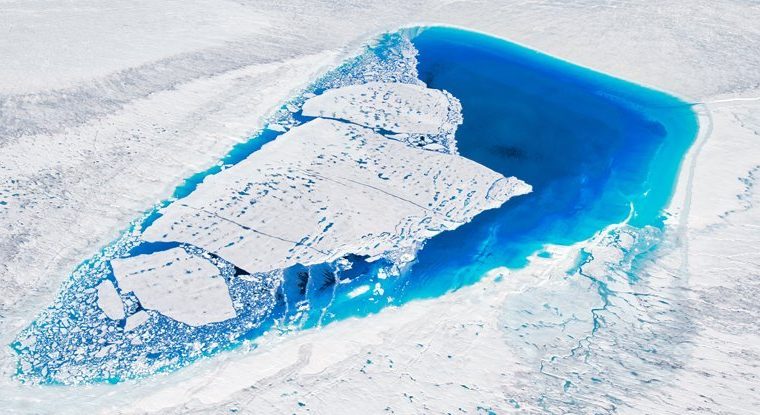Tony Piloseno even used his wildly successful and viral TikToks as part of a digital marketing pitch to the company to appeal to younger members of Gen Z.
Tanya Chen BuzzFeed News Reporter
Posted on November 18, 2020, at 4:46 p.m. ET
An Ohio University senior who worked a part-time job at a local Sherwin-Williams store was fired after the company discovered his popular paint-mixing TikTok channel @tonesterpaints, which currently has over 1.2 million followers.
Tony Piloseno said that for months he'd been pointing to his viral account as an example of what Sherwin-Williams could do on social media and by marketing their brand to a younger audience.
But instead it led corporate personnel to investigate his social media account, and they ultimately fired him after determining he was making "these videos during [his] working hours" and with company equipment.
According to termination papers Piloseno provided to BuzzFeed News, the official offense the company handed down to him was "gross misconduct," which included the offenses of "wasting properties [and] facilities," and "seriously embarrass[ing] the Company or its products."
Shortly after this story was published, the company spokesperson told BuzzFeed News that it was due to a "customer complaint" about Piloseno's TikToks that they terminated his employment.
Piloseno told BuzzFeed News he did admit to filming TikToks while he was already mixing paints for customers when he first started posting to his channel in December 2019. But, as his page grew, he committed to purchasing cans of paint with his employee discount.
"They first accused me of stealing — I told them I purchased all my paint," he said. "They made me answer a bunch of questions like when I was doing this, where, if there was anyone in the store while I was doing [filming]. There was never anyone with me while I doing it."
Piloseno said he had been working at the Sherwin-Williams store in Athens, Ohio, for three years as a senior sales associate when he began recording and posting his paint mixing to @tonesterpaints.
"I'd just downloaded TikTok, and the videos took off almost immediately. It was just me doing a few customer orders here and there," he said. "When we were slow, I was making videos showing the process of it all."
The sixth paint-mixing video @tonesterpaint ever shared gained a million views.
Piloseno said he fell in love with paint, and mixing colors, when he started work at his local Sherwin-Williams.
"I loved the job immediately," he said. "I love how colors blend together, what goes with what... It’s hard to explain, but I really enjoy mixing paint. I like showing what stuff it can do."
Sometime in March or April, Piloseno said he began assessing his TikTok account as "as a marketing opportunity for Sherwin-Williams." He created a pitch deck "to show the company how TikTok has a younger base" and "to basically develop brand awareness through TikTok."
He said he presented the pitch to his manager and a sales rep at the store, who "loved" it, and he was given a contact in the marketing department of the company's headquarters.
"I emailed [the marketing contact] about two or three times, I even reached out to him on LinkedIn. It took two months to get a response from him," Piloseno said. "He basically told me that there wasn't really any promotions going on so there wasn't a need to see the presentation."
However, a month later, he received a call from the "loss prevention" department about his social media account. Apparently, the combination of his marketing pitch and calls the company would get about experimental paint mixing inspired by his TikToks had put the company on high alert.
The company specifically received a high volume of inquiries about mixing blueberries into their paint because of this viral TikTok.
He was fired in late July. His formal termination letter signed by the district manager stated that Piloseno admitted to making TikToks during "working hours and sometimes after work."
"At times in making the videos, you used company tint machines while both on the clock/and off the clock for your personal use," the letter went on to say.
"Upon conclusion of our investigation, it has been determined you are in violation of several gross misconduct policies," the district manager wrote.
Piloseno was baffled. "I never got a chance to tell my side of the story. I thought an HR person would call me about it — I never even talked to my district manager," he said. "I was pretty pissed at first, but there was nothing I could really do."
The company told BuzzFeed News on Wednesday that a "customer's concerns" is what launched their investigation, and what ultimately led to their decision to let him go "due to multiple company policy violations."
"While we don’t discuss the details of employee matters publicly, what I can tell you is that we were made aware of the TikTok videos produced by Anthony Piloseno through a customer complaint," said Julie Young, the vice president of global corporate communications. "We take all complaints seriously and thoroughly investigated the customer’s concerns. Following the investigation, Mr. Piloseno was let go in July 2020 due to multiple Company policy violations."
Piloseno has since shared what happened to him publicly. For the past few months, he's continued to film paint-mixing TikToks in a friend's basement.
"I bought myself a light box. I bought some empty gallons at Lowe's — I basically started shopping at Lowe's afterward," he added.
In response to what happened to him, @tonesterpaint's fans believe Sherwin-Williams missed out on a major opportunity to expand their customer base.
"They FIRED YOU?? It's 2020 and companies still don't understand the benefit of digital/social marketing," one person commented in response to his news.
Piloseno said he enjoyed his job and colleagues but hopes the company takes a different approach in the future.
"I know they have a lot of employees that might not have as much influence or say, but you got to hear them out if they have an idea," he said.
Despite how big his account has grown, he only makes money on a few promotional opportunities here and there because he's not a part of TikTok's Creator Fund. But he said he does hope his page can sustain a full-time income one day.
"I'm working on making a logo; I just bought a domain name to make my own website," he said. "I'm hoping to sell my own merchandise and my own paint colors."
TIK TOK VIDEOS https://www.buzzfeednews.com/article/tanyachen/college-student-behind-a-massively-popular-paint-mixing
UPDATE
November 18, 2020.
This post has been updated with statements from Sherwin-Williams headquarters.

Tanya Chen is a social news reporter for BuzzFeed and is based in Chicago.
Posted on November 18, 2020, at 4:46 p.m. ET
An Ohio University senior who worked a part-time job at a local Sherwin-Williams store was fired after the company discovered his popular paint-mixing TikTok channel @tonesterpaints, which currently has over 1.2 million followers.
Tony Piloseno said that for months he'd been pointing to his viral account as an example of what Sherwin-Williams could do on social media and by marketing their brand to a younger audience.
But instead it led corporate personnel to investigate his social media account, and they ultimately fired him after determining he was making "these videos during [his] working hours" and with company equipment.
According to termination papers Piloseno provided to BuzzFeed News, the official offense the company handed down to him was "gross misconduct," which included the offenses of "wasting properties [and] facilities," and "seriously embarrass[ing] the Company or its products."
Shortly after this story was published, the company spokesperson told BuzzFeed News that it was due to a "customer complaint" about Piloseno's TikToks that they terminated his employment.
Piloseno told BuzzFeed News he did admit to filming TikToks while he was already mixing paints for customers when he first started posting to his channel in December 2019. But, as his page grew, he committed to purchasing cans of paint with his employee discount.
"They first accused me of stealing — I told them I purchased all my paint," he said. "They made me answer a bunch of questions like when I was doing this, where, if there was anyone in the store while I was doing [filming]. There was never anyone with me while I doing it."
Piloseno said he had been working at the Sherwin-Williams store in Athens, Ohio, for three years as a senior sales associate when he began recording and posting his paint mixing to @tonesterpaints.
"I'd just downloaded TikTok, and the videos took off almost immediately. It was just me doing a few customer orders here and there," he said. "When we were slow, I was making videos showing the process of it all."
The sixth paint-mixing video @tonesterpaint ever shared gained a million views.
Piloseno said he fell in love with paint, and mixing colors, when he started work at his local Sherwin-Williams.
"I loved the job immediately," he said. "I love how colors blend together, what goes with what... It’s hard to explain, but I really enjoy mixing paint. I like showing what stuff it can do."
Sometime in March or April, Piloseno said he began assessing his TikTok account as "as a marketing opportunity for Sherwin-Williams." He created a pitch deck "to show the company how TikTok has a younger base" and "to basically develop brand awareness through TikTok."
He said he presented the pitch to his manager and a sales rep at the store, who "loved" it, and he was given a contact in the marketing department of the company's headquarters.
"I emailed [the marketing contact] about two or three times, I even reached out to him on LinkedIn. It took two months to get a response from him," Piloseno said. "He basically told me that there wasn't really any promotions going on so there wasn't a need to see the presentation."
However, a month later, he received a call from the "loss prevention" department about his social media account. Apparently, the combination of his marketing pitch and calls the company would get about experimental paint mixing inspired by his TikToks had put the company on high alert.
The company specifically received a high volume of inquiries about mixing blueberries into their paint because of this viral TikTok.
He was fired in late July. His formal termination letter signed by the district manager stated that Piloseno admitted to making TikToks during "working hours and sometimes after work."
"At times in making the videos, you used company tint machines while both on the clock/and off the clock for your personal use," the letter went on to say.
"Upon conclusion of our investigation, it has been determined you are in violation of several gross misconduct policies," the district manager wrote.
Piloseno was baffled. "I never got a chance to tell my side of the story. I thought an HR person would call me about it — I never even talked to my district manager," he said. "I was pretty pissed at first, but there was nothing I could really do."
The company told BuzzFeed News on Wednesday that a "customer's concerns" is what launched their investigation, and what ultimately led to their decision to let him go "due to multiple company policy violations."
"While we don’t discuss the details of employee matters publicly, what I can tell you is that we were made aware of the TikTok videos produced by Anthony Piloseno through a customer complaint," said Julie Young, the vice president of global corporate communications. "We take all complaints seriously and thoroughly investigated the customer’s concerns. Following the investigation, Mr. Piloseno was let go in July 2020 due to multiple Company policy violations."
Piloseno has since shared what happened to him publicly. For the past few months, he's continued to film paint-mixing TikToks in a friend's basement.
"I bought myself a light box. I bought some empty gallons at Lowe's — I basically started shopping at Lowe's afterward," he added.
In response to what happened to him, @tonesterpaint's fans believe Sherwin-Williams missed out on a major opportunity to expand their customer base.
"They FIRED YOU?? It's 2020 and companies still don't understand the benefit of digital/social marketing," one person commented in response to his news.
Piloseno said he enjoyed his job and colleagues but hopes the company takes a different approach in the future.
"I know they have a lot of employees that might not have as much influence or say, but you got to hear them out if they have an idea," he said.
Despite how big his account has grown, he only makes money on a few promotional opportunities here and there because he's not a part of TikTok's Creator Fund. But he said he does hope his page can sustain a full-time income one day.
"I'm working on making a logo; I just bought a domain name to make my own website," he said. "I'm hoping to sell my own merchandise and my own paint colors."
TIK TOK VIDEOS https://www.buzzfeednews.com/article/tanyachen/college-student-behind-a-massively-popular-paint-mixing
UPDATE
November 18, 2020.
This post has been updated with statements from Sherwin-Williams headquarters.

Tanya Chen is a social news reporter for BuzzFeed and is based in Chicago.










